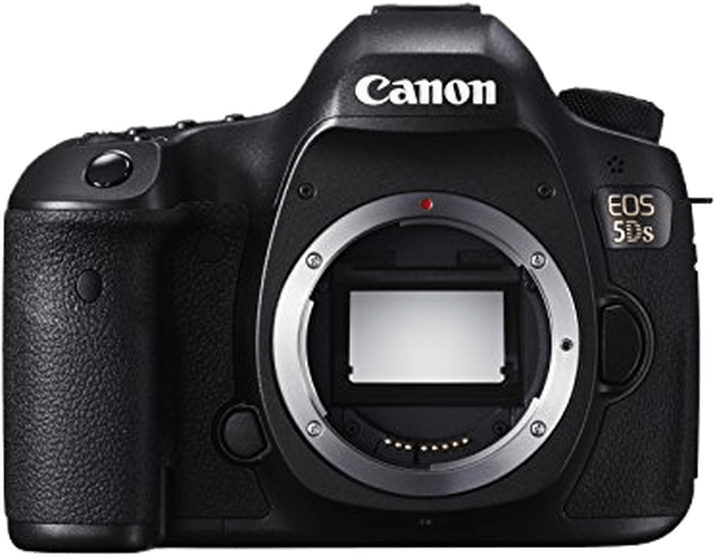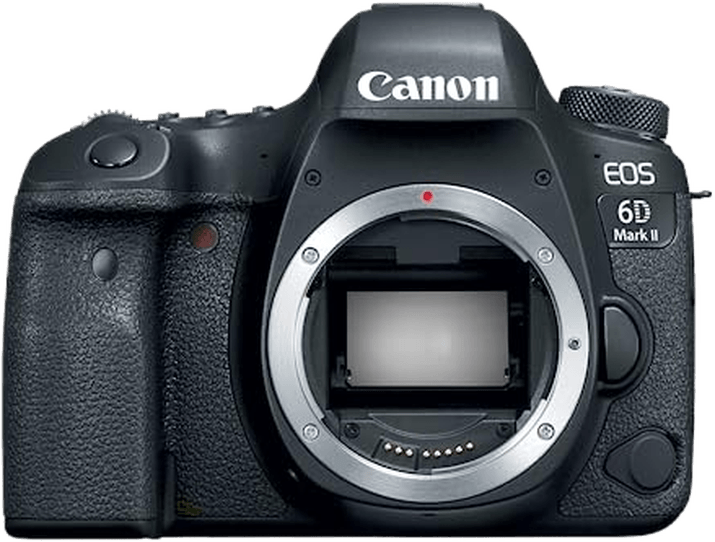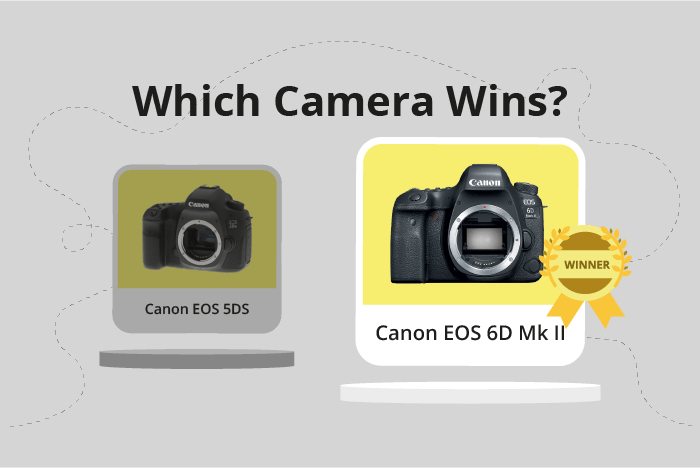Canon EOS 5DS vs EOS 6D Mark II Comparison
Canon EOS 5DS

Canon EOS 6D Mark II

The Canon EOS 6D Mark II emerges as the winner with a score of 71/100, while the Canon EOS 5DS trails closely behind at 69/100. Both cameras are DSLR models, released in 2015 and 2017, respectively. They share similar dimensions, with the 6D Mark II being slightly smaller at 144 x 111 x 75mm compared to the 5DS at 152 x 116 x 76mm.
The 6D Mark II has the advantage of a lower launch price ($2000) and significantly lighter weight (453g / 1.00lbs) compared to the 5DS ($3700 and 930g / 2.05lbs). However, the 5DS still holds its ground with a marginally higher overall score.
Considering the specifications, the Canon EOS 6D Mark II offers better value for money and portability, while the Canon EOS 5DS delivers a slightly higher performance. Ultimately, the choice depends on the user’s preferences and photography needs.
Canon EOS 5DS vs EOS 6D Mark II Overview and Optics
The Canon EOS 5DS emerges as the winner in the optics comparison, scoring 73/100, while the Canon EOS 6D Mark II trails slightly with a score of 69/100. Both cameras share key specifications, including a CMOS sensor, full-frame sensor size, Canon EF lens mount, and lack of image stabilization.
The 5DS outperforms the 6D Mark II in several aspects. With its 50.6 megapixels, the 5DS captures more detail in images than the 6D Mark II, which has 26.2 megapixels. Additionally, the 5DS boasts a dual Digic 6 processor, providing faster image processing and better image quality. The camera’s superiority is further evidenced by its DXOMARK sensor score of 87, compared to the 6D Mark II’s score of 85.
On the other hand, the 6D Mark II has certain advantages over the 5DS. Its shooting speed of 6.5 frames per second is faster than the 5DS’s 5 frames per second, allowing for better performance in capturing fast-moving subjects. Furthermore, the 6D Mark II features a Digic 7 processor, which, despite being a single processor, is a newer and more advanced model than the dual Digic 6 processors in the 5DS.
In comparing these cameras, it is clear that the Canon EOS 5DS excels in image quality and detail, making it a better choice for photographers seeking high-resolution images. However, the Canon EOS 6D Mark II offers a faster shooting speed and a more advanced processor, which may appeal to those prioritizing action photography. Ultimately, the choice between these two cameras will depend on the specific needs and preferences of the photographer.
Canon EOS 5DS vs EOS 6D Mark II Video Performance
The Canon EOS 5DS and the Canon EOS 6D Mark II both achieve a video score of 57 out of 100, indicating that they have similar video capabilities. In terms of shared specifications, both cameras offer Full HD video resolution with maximum video dimensions of 1920 x 1080 and a maximum video frame rate of 30fps. Additionally, both cameras have built-in time-lapse functionality.
Since both cameras have the same score, no camera wins over the other in terms of video capabilities. They share the same specifications, which allows users to capture clear and smooth video footage. The Full HD resolution and 30fps frame rate ensure that the videos recorded on either camera will have a high level of detail, making them suitable for various purposes, such as vlogging, short films, or event coverage.
Although both cameras have the same video specifications, it is essential to consider other factors, such as price, build quality, and additional features, when deciding which camera is better suited to an individual’s needs. However, considering only video capabilities, both the Canon EOS 5DS and the Canon EOS 6D Mark II provide identical video performance.
When comparing these two cameras, potential buyers should focus on other aspects, such as sensor size, image quality, autofocus performance, and additional features. Since both cameras offer the same video performance, users can be confident that either option will provide them with reliable video capabilities.
Canon EOS 5DS vs EOS 6D Mark II Features and Benefits
The Canon EOS 6D Mark II emerges as the winner with a feature score of 83/100, compared to the Canon EOS 5DS’s score of 59/100.
Both cameras share some specifications, such as screen size and screen resolution. They both have a 3-inch screen and a resolution of 1,040,000 dots. However, the Canon EOS 6D Mark II outperforms the EOS 5DS in several aspects. The 6D Mark II features a touchscreen, which the 5DS lacks. Additionally, the 6D Mark II has a flip screen, GPS, WIFI, and Bluetooth capabilities, all of which are absent in the 5DS model.
Despite the lower feature score, the Canon EOS 5DS has a larger screen size of 3.2 inches compared to the 6D Mark II’s 3-inch screen. This may provide a slightly better viewing experience for users. However, it is important to note that the difference in screen size is minimal and may not significantly impact overall user experience.
Taking these factors into account, it is clear that the Canon EOS 6D Mark II offers more advanced features than the Canon EOS 5DS. The 6D Mark II’s touchscreen, flip screen, GPS, WIFI, and Bluetooth capabilities provide users with greater versatility and connectivity options, making it a better choice for those seeking a feature-rich camera. On the other hand, the Canon EOS 5DS may still appeal to users who prioritize a slightly larger screen size and do not require the additional features offered by the 6D Mark II.
Canon EOS 5DS vs EOS 6D Mark II Storage and Battery
The Canon EOS 5DS outperforms the Canon EOS 6D Mark II in storage and battery with a score of 65/100, while the 6D Mark II scores 45/100. Both cameras share common specifications, including compatibility with SD/SDHC/SDXC (UHS-I compatible) memory cards, and the absence of USB charging.
The 5DS excels with its two memory card slots and support for Compact Flash cards, offering more storage capacity and flexibility. However, the 6D Mark II surpasses the 5DS in battery life, providing 1200 shots compared to the 5DS’s 700 shots. Both cameras use different battery types, with the 5DS using the LP-E6 and the 6D Mark II using the LP-E6N.
Despite the 6D Mark II’s longer battery life, the 5DS’s superior storage capabilities make it the better choice in this comparison. The 6D Mark II’s advantage in battery life may be beneficial for extended shooting sessions, but the 5DS’s dual memory card slots and broader card compatibility provide greater overall storage and battery performance.
Canon EOS 5DS vs EOS 6D Mark II – Our Verdict
Are you still undecided about which camera is right for you? Have a look at these popular comparisons that feature the Canon EOS 5DS or the Canon EOS 6D Mark II:

